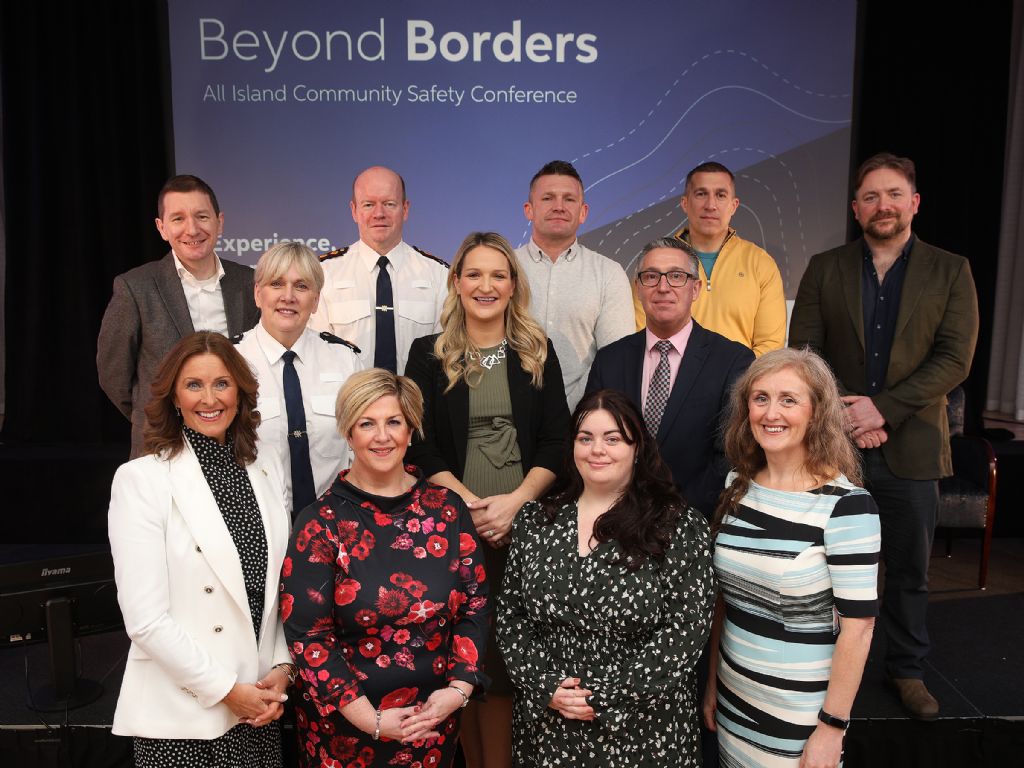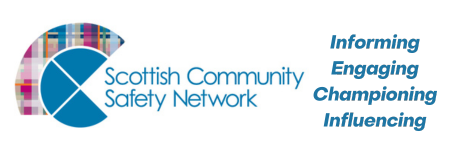
by Dave Shea, Senior National Development Officer
One of SCSN’s long-term development goals is to become a centre for excellence, domestically and internationally, for community safety; to share what we know, and learn from others. We’ve already made good links with counterparts in England, Wales and Norway, and made representations at a European conference earlier this year.
In November, SCSN attended Ireland’s inaugural Beyond Borders: All Island Community Safety Conference. It was a historic first for Northern Ireland and the Republic of Ireland; co-created, co-facilitated in partnership with agencies north and south. The theme of the event was ‘collaboration and community engagement’, bringing together around 350 people, in-person from across the island to one place. And me. I was privileged, not only to attend but invited to present, and also take part in a panel discussion. My job – somewhat dauntingly – was to represent Scotland, explain the Scottish experience of community safety – both historic and contemporary – and bring home some learning, new ideas and connections.
44 slides (!), a brief animation, and a couple of off script remarks – inside a 30 minute slot – isn’t nearly enough to paint a comprehensive portrait of Scottish community safety. But it was adequate time, and a fantastic opportunity, to outline the main beats of our national community safety journey; describe the range and complexity of what’s happening in Scotland; the challenges; the wins; and the many, many things we’ve still to do.
At conference, and on site visit the day before, I was struck by the quality and effectiveness of the Northern Irish model. Specifically, the work of the Newry, Mourne & Down District Council’s Policing & Community Safety Partnership (NM&D PCSP), 1 of 11 statutory PCSPs in Northern Ireland, and an exemplar of best practice. Their road safety and awareness work through the Paulie Project is hard hitting and impacting. Their secure drug bin initiative and amnesties using RAPID is taking prescription and illicit drugs off the streets. Their public engagement – PCSP’s in dialogue with the public through well produced videos – is particularly impressive and inspiring, and something Scottish CSPs might choose to emulate (budgets permitting). And my favourite, their answer to speeding motorists near schools, is Kids Court; a phenomenal partnership between the Police Service of Northern Ireland (PSNI), schools and school children: speeders offered points and a fine, or an audience with a jury of P7 school children. Some folk think facing the bairns is the easy option but leave greeting, remorseful and changed. Superb pre-emptive restorative justice in action! But overall, the work NM&D PCSP is doing is collaborative, creative and it’s working.
There is real interest and curiosity in Ireland, about what we are doing and how we do it in Scotland. The Republic of Ireland and Northern Ireland are at different stages in their development of CSPs [PCSPs]. There are 3 PCSP pilots currently underway in the Republic. There are 11 established PCSPs in the North. We are perhaps a little further along the road in Scotland but we have much to learn from each other; many mutual challenges; universal problems and solutions to find. Far better to tackle these things together, than struggle alone. Community safety doesn’t begin or end at council, county or country borders.
It was so encouraging to see such positive engagement and enthusiasm for collaboration in community safety, across the Irish Sea.
